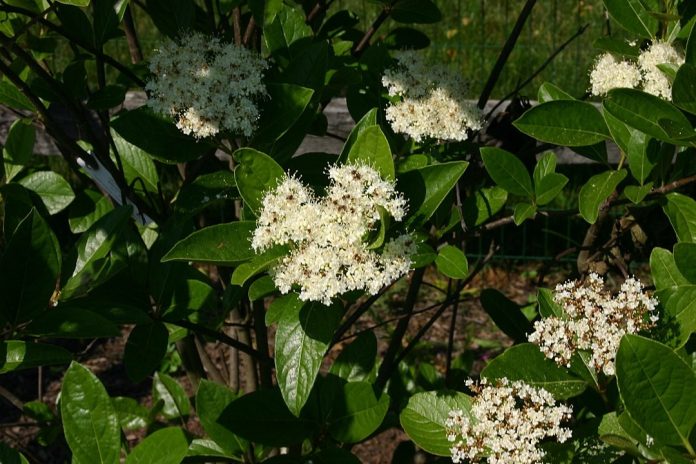
Featured Photo by SB Johnny / CC BY-SA 3.0
A field guide on how to identify and propagate Wild Raisin (Viburnum nudum), a hardy shrub that is native to eastern North America.
How to Identify Wild Raisin (Viburnum nudum)
Leaves
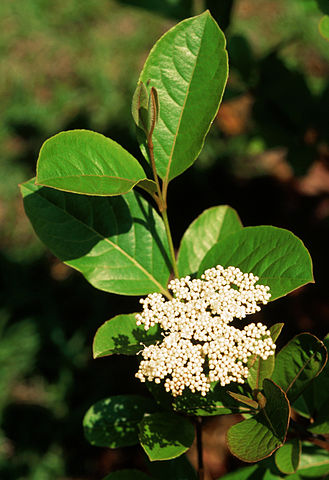
Wild raisin leaves are elliptical to ovate shaped, with entire to serrulate margins, and grow on the stems in opposite arrangements.
Fruit
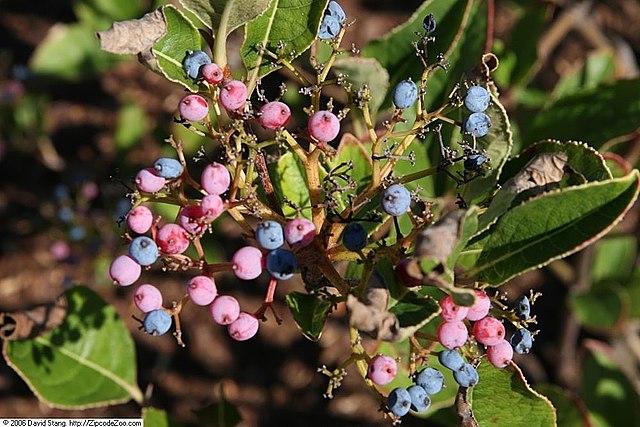
Wild raisin produces berries that change color as they mature. The berries start out light pink and gradually darken to a deep pink hue. As they continue to ripen, the color shifts to a blue shade before finally turning purplish-black.
Flower
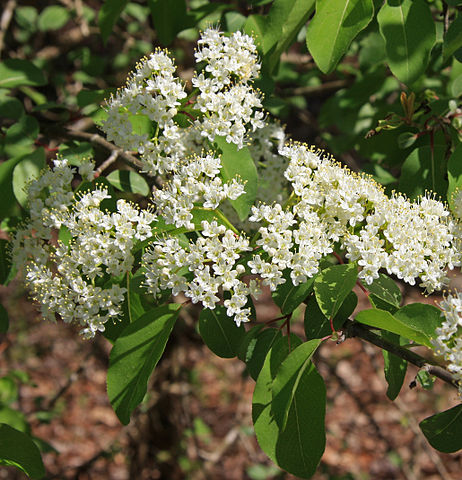
Viburnum nudum produces clusters of small, white or pinkish-white flowers. They’re arranged in flat-topped cymes and have a lack of fragrance. Each individual flower has five petals that are slightly recurved, giving the flower a star-shaped appearance.
Flowering Season
Wild raisin flowers typically bloom from late spring to early summer.
Habitat
Look for wild raisins on rich hillsides, near bogs, wet pinelands, and wooded swamps.
Some other understory plants that associate with wild raisin are:
- Threeleaf Goldthread (Coptis trifolia)
- Bunchberry (Cornus canadensis)
- Bluebead (Clintonia borealis)
Wildlife Value
Although wild raisin bears bountiful fruiting, it’s not a preferred browse for animals.
Nevertheless, many animals still benefit from the shrub, birds such as:
- Ruffed Grouse
- Brown Thrasher
- Cedar Waxwing
- Rose-breasted Grosbeak, and
- Purple Finch
Also mammals such as:
- Red Squirrel
- Eastern Chipmunk
- Snowshoe Hare
- Striped Skunk
- White-tailed Deer
How to Propagate Wild Raisin (Viburnum nudum)

Hardiness Zone: 5-9

Soil Type: Moist loam, peat.

Water: Normal to High.

Exposure: Full Sun to Partial Shade.
You can propagate wild raisin with two effective methods:
- Stem Cuttings: Usually provides established trees faster, but can be tricky.
- By Seed: Viburnum takes quite some time to propagate by seed, but it’s still effective.
How to Propagate Wild Raisin (Viburnum nudum) by Seed
To propagate wild raisin by seed, you’ll need to harvest the fruits! Now here the most important part is timing.
You want to harvest the fruits when they’re fully ripe, the longer you wait the better.
The best time to harvest wild raisins for their seeds is usually early fall.

That’s because viburnum requires a warm-cold stratification period. The longer they stay on the branch, the less you’ll have to tamper with them.
Alternatively, you can buy bulk seeds online at Sheffields.
How to Harvest Seeds
Pick by hand when fruits are dark purple, blend the fruits, remove the pulp, and drain the juice with a sieve to get seeds.
Stratification
Wild raisin (Viburnum nudum) requires a 60-day warm, and 90-day cold stratification.
Sowing
Sow wild raisin seeds at least 1/4″ deep, tamp the soil, then mulch.
It can take up to 120 days for germination, some may germinate sporadically.
How to Propagate Wild Raisin (Viburnum nudum) by Cuttings
If you want to propagate wild raisins faster, you’re probably better off taking cuttings. For viburnum, the sweet spot for cuttings that will root well is to take them as semi-hardwood.
That’s when the season’s growth is starting to harden.
Harvesting Season: Minimum 6 weeks after the first leaves of the spring.

- Cutting length: Each cutting should be 4-5 inches long.
- Rooting Soil: A 70/30 coarse sand/peat mix is the best rooting medium you can use to propagate wild raisin.
- Duration: Roots take the whole summer to develop.
- Wintering: Bring cuttings in to overwinter or leave them under the cover of snow.
- Transplant Time: Re-pot the cuttings in a good compost/soil mix when they awaken the following spring.
Now to finalize, it’s a good idea to add some slow-release fertilizing granules and of course, water regularly. Feel free to place the cuttings in a sunny location.
Wild raisin is a species of viburnum, and they all propagate in a similar way.
If you want to get the juicy details on how to propagate viburnum, take a look at our parent article:
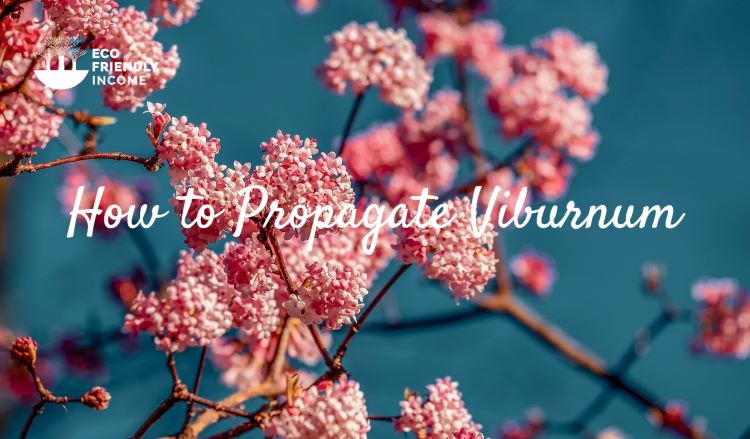
FAQ
A: They are semi-evergreen, which means they may shed some leaves, especially if the winter is harsh.
A: Yes you can eat wild raisin. The berries are acidic if picked too early, but if ripe, they taste quite sweet.
A: As opposed to other viburnums, viburnum nudum flowers aren’t particularly fragrant.
